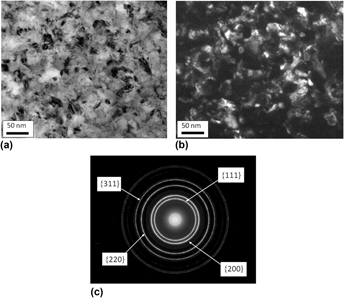Published online by Cambridge University Press: 30 October 2015

The work hardening behavior of electrodeposited nanocrystalline nickel (29 and 19 nm) was investigated under multiaxial loading and compared with coarse-grained nickel. Plastic strain gradients were introduced into the materials using large Rockwell D hardness indentations, and measured through cross-sectional hardness profiles. The results showed that the coarse-grained material exhibited substantial hardening up to twice the hardness of the deformation-free area due to dislocation mediated deformation, while the nanocrystalline materials displayed small hardness variations along the strain gradient, indicative of considerably reduced dislocation interactions. Moreover, the grain structure analysis (cumulative volume fraction and size distribution) for the nanocrystalline materials suggested the operation of both dislocation mediated and grain boundary controlled deformation mechanisms, the latter becoming more significant with increasing cumulative sample volume of very small grains. The plastic deformation zone sizes under Rockwell indentation of the 29 nm Ni are similar to those conventional materials with reduced strain hardening. Microhardness-indentation size effects were negligible in both the nanocrystalline and coarse-grained materials.